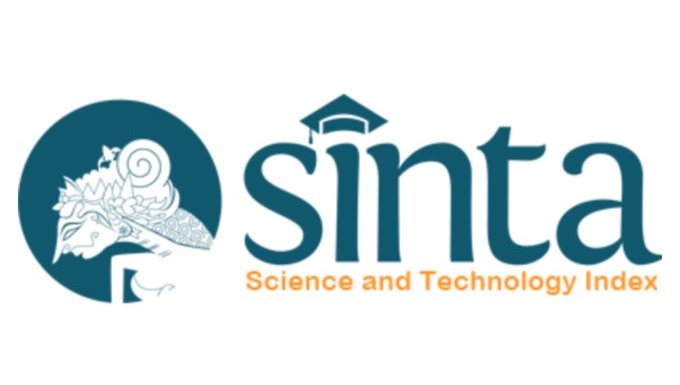Several Factors Contributing to Nutritional Disorders in Children at the Maubesi Community Health Center, East Nusa Tenggara: A Retrospective Cohort Study
Research
DOI:
https://doi.org/10.55175/cdk.v52i11.1568Keywords:
Children, undernutrition, malnutritionAbstract
Introduction: In Indonesia, the incidence of nutritional disorders (malnutrition) in children aged 0–59 months in 2023 reached 8.5%. Methods: A retrospective cohort study was conducted on 48 children in the Maubesi Health Center working area, East Nusa Tenggara, in January–June 2024 to assess the relationship between gender, birth weight and length, number of siblings, place of birth, exclusive breastfeeding, immunization status, medical history, food variation, mother’s age and education, mother’s
occupation, mother’s weight before pregnancy, mother’s Hb levels during pregnancy, mother’s history of hypertension and diabetes, and antenatal care (ANC) visits with the incidence of malnutrition and severe malnutrition. Data were obtained from the Integrated SIGIZI application, and children’s nutritional status was measured using the WHO (2006) weight-for-height chart. Results: The
analysis used Fisher’s exact test and Spearman’s rank correlation test. A significant relationship was found between the number of ANC visits and the incidence of both malnutrition and severe malnutrition (p = 0.001), which showed a weak negative correlation: r(44) = -0.139, p = 0.357. Conclusion: In this study, a negative correlation was obtained between the number of ANC visits and
the incidence of undernutrition and severe malnutrition.
Downloads
References
World Health Organization. Malnutrition [Internet]. Geneva: World Health Organization; 2024 Mar 01 [cited 2024 Jul 04]. Available from: https://www.who.int/news-room/fact-sheets/detail/malnutrition#:~:text=Overview,low%20weight%2Dfor%2Dage)%3B.
UNICEF. Global nutrition report 2022 stronger commitments for greater action [Internet]. New York, USA: United Nations Children’s Fund; 2020 [cited 2024 Jul 04]. Available from: https://data.unicef.org/resources/global-nutrition-report-2020/.
UNICEF, World Health Organization, World Bank Group. Joint malnutrition estimates 2023 edition [Internet]. Geneva: World Health Organization; 2023 [cited 2024 Jul 04]. Available from: https://www.who.int/data/gho/data/themes/topics/joint-child-malnutritionestimates-unicef-who-wb#:~:text=In%202022%2C%20148.1%20million%20children,for%20their%20height%20(overweight).
WHO, UNICEF, European Commission. Global nutrition targets tracking tool [Internet]. Geneva: World Health Organization; 2021 [cited 2024 Jul 04]. Available from: https://www.who.int/data/nutrition/tracking-tool/wasting.
Badan Kebijakan Pembangunan Kesehatan Kementerian Kesehatan Republik Indonesia. Survey kesehatan Indonesia (SKI) 2023 dalam angka [Internet]. Jakarta: Kementerian Kesehatan; 2023 [cited 2024 Jul 04]. Available from: https://www.badankebijakan.kemkes.go.id/ski-2023-dalam-angka/.
Soliman A, De Sanctis V, Alaaraj N, Ahmed S, Alyafei F, Hamed N, et al. Early and long-term consequences of nutritional stunting: from childhood to adulthood. Acta Biomedica. 2021;92(1):11346. doi: 10.23750/abm.v92i1.11346.
Galloway R. Global nutrition outcomes at ages 5 to 19. In: Jamison DT, Nugent R, Gelband H, Horton S, Jha P, Laxminarayan R, et al., editors. Child and adolescent health and development [Internet]. 3rd ed. Washington (DC): The International Bank for Reconstruction and Development; 2017 [cited 2024 Jul 04]. Available from: https://www.ncbi.nlm.nih.gov/books/NBK525239/. doi: 10.1596/978-1-4648-0423-6_ch3.
Tette EMA, Sifah EK, Nartey ET. Factors affecting malnutrition in children and the uptake of interventions to prevent the condition.BMC Pediatr. 2015;15(1):189. doi: 10.1186/s12887-015-0496-3.
Shirima GV, Nyongole O, Massawe A, Kilonzo G. Factors associated with cognitive developmental delay among infants attending reproductive and child health clinics in Dar es Salaam, Tanzania. World J Adv Res Rev. 2021;9(2):179–81. doi:10.30574/wjarr.2021.9.2.0060.
Victora CG, Christian P, Vidaletti LP, Gatica-Domínguez G, Menon P, Black RE. Revisiting maternal and child undernutrition in lowincome and middle-income countries: variable progress towards an unfinished agenda. Lancet 2021;397:1388–99. doi: 10.1016/S0140-6736(21)00394-9.
Li Z, Kim R, Vollmer S, Subramanian SV. Factors associated with child stunting, wasting, and underweight in 35 low- and middleincome countries. JAMA Netw Open. 2020 Apr 1;3(4):e203386. doi: 10.1001/jamanetworkopen.2020.3386.
Harding KL, Aguayo VM, Webb P. Factors associated with wasting among children under five years old in South Asia: implications for action. PLoS One. 2018;13(7):e0198749. doi: 10.1371/journal.pone.0198749.
Iftikhar A. Maternal anemia and its impact on nutritional status of children under the age of two years. Biomed J Sci Tech Res.2018;5(3):4519–22. doi: 10.26717/BJSTR.2018.05.001197.
Gebre A, Reddy PS, Mulugeta A, Sedik Y, Kahssay M. Prevalence of malnutrition and associated factors among under-five children in pastoral communities of Afar Regional State, Northeast Ethiopia: a community-based cross-sectional study. J Nutr Metab.2019;2019:1–13. doi: 10.1155/2019/9187609.
Tekile AK, Woya AA, Basha GW. Prevalence of malnutrition and associated factors among under-five children in Ethiopia: evidence from the 2016 Ethiopia demographic and health survey. BMC Res Notes. 2019;12(1):391. doi: 10.1186/s13104-019-4444-4.
Getu BD, Azanaw KA, Zimamu LY, Adal GM, Tibebu NS, Emiru TD, et al. Wasting and its associated factors among children aged from 6 to 59 months in Debre Tabor town, Amhara region of Ethiopia, 2019: a multicentre community-based cross-sectional study. BMJ Open. 2023;13(7):e071679. doi: 10.1136/bmjopen-2023-071679.
Rahayu RM, Pamungkasari EP, Wekadigunawan CSP. The biopsychosocial determinants of stunting and wasting in children aged 12–48 months. J Maternal Child Health. 2018;3(2):105–18. https://doi.org/10.26911/thejmch.2018.03.02.03.
Makoka D. The impact of maternal education on child nutrition: evidence from Malawi, Tanzania, and Zimbabwe [WP84] [Internet]. United States Agency for International Development; 2013. Available from: https://www.dhsprogram.com/pubs/pdf/WP84/WP84.pdf.
Onis M de. Length/height-for-age, weight-for-age, weight-for-length, weight-for-height and body mass index-for-age; methods and development [Internet]. WHO child growth standards. Geneva: WHO Press; 2006 .p. 312. https://www.gbv.de/dms/hbz/toc/ht014766503.pdf.
Yazew T, Daba A. Associated factors of wasting among infants and young children (IYC) in Kuyu District, Northern Oromia, Ethiopia. Biomed Res Int. 2022;2022:1–8. doi: 10.1155/2022/9170322.
Gilano G, Hailegebreal S, Sako S, Haile F, Gilano K, Seboka BT, et al. Understanding child wasting in Ethiopia: cross-sectional analysis of 2019 Ethiopian demographic and health survey data using generalized linear latent and mixed models. JMIR Publ Health Surveill.2023;9:e39744. doi: 10.2196/39744.
Wali N, Agho KE, Renzaho AMN. Wasting and associated factors among children under 5 years in five south asian countries (2014–2018): analysis of demographic health surveys. Int J Environ Res Public Health. 2021;18(9):4578. doi: 10.3390/ijerph18094578.
Kuhnt J, Vollmer S. Antenatal care services and its implications for vital and health outcomes of children: evidence from 193 surveys in 69 low-income and middle-income countries. BMJ Open. 2017;7(11):e017122. doi: 10.1136/bmjopen-2017-017122.
Arjan de W, Eleanor R, Praveen K, Abner D, Harriet T, Saul G. Continuum of care for children with wasting in India: opportunities for an integrated approach. Emergency Nutrition Network [Internet]. 2019 [cited 2024 Jul 05]; 82. Available from: https://www.ennonline.net/fex/60/continuumofcareindia?version=current.
Downloads
Published
How to Cite
Issue
Section
License
Copyright (c) 2025 Yunri Steviani Saudale

This work is licensed under a Creative Commons Attribution-NonCommercial 4.0 International License.





















